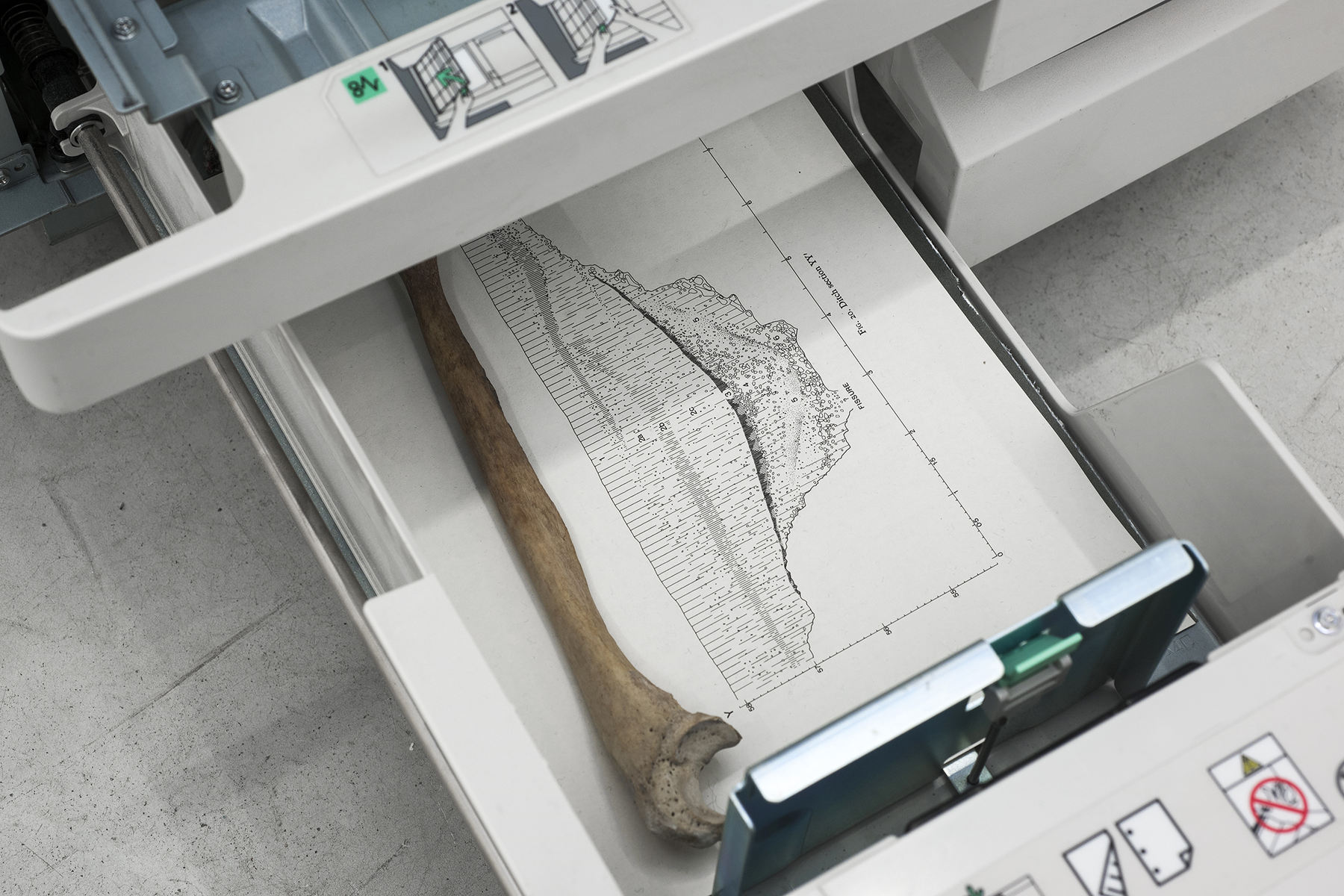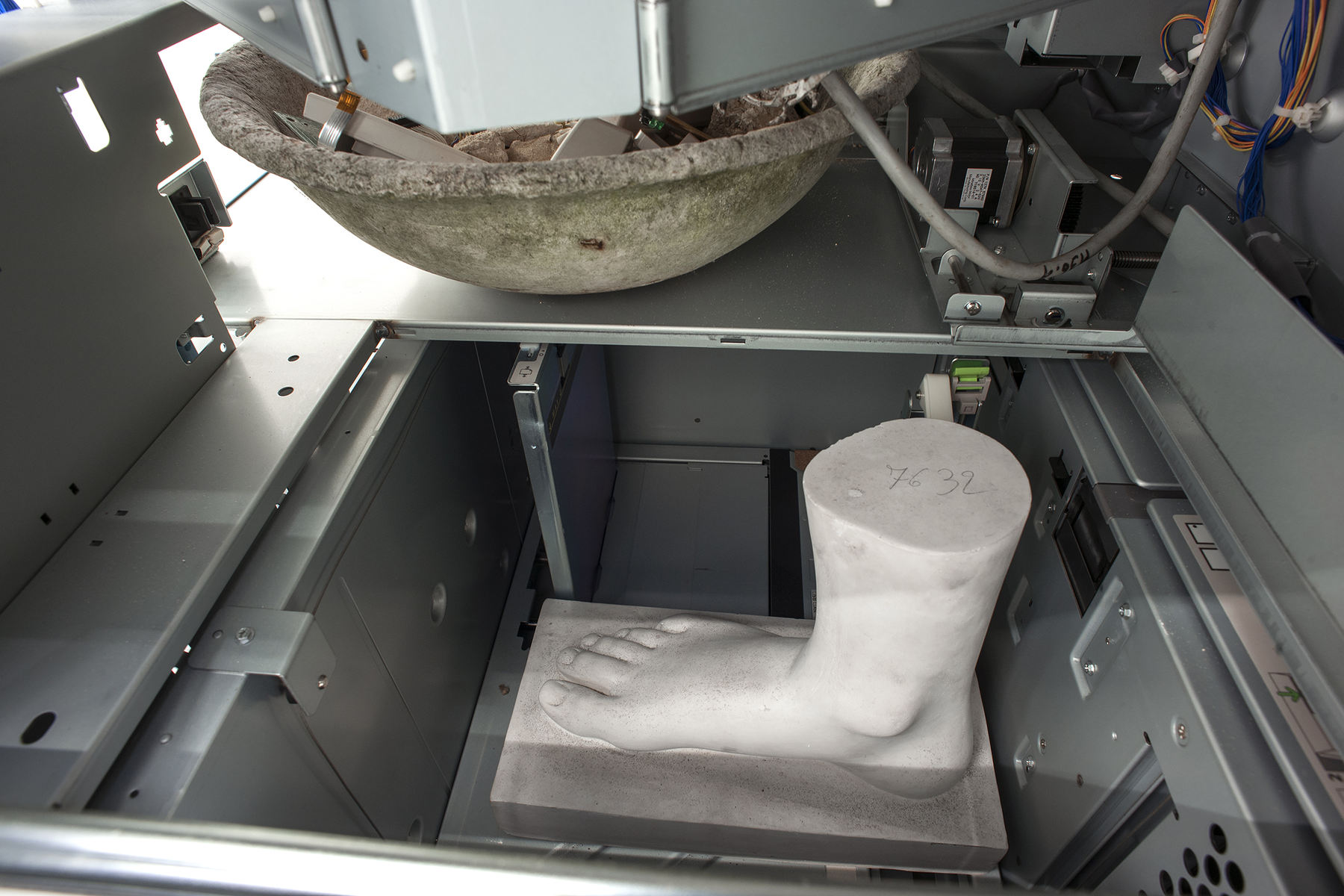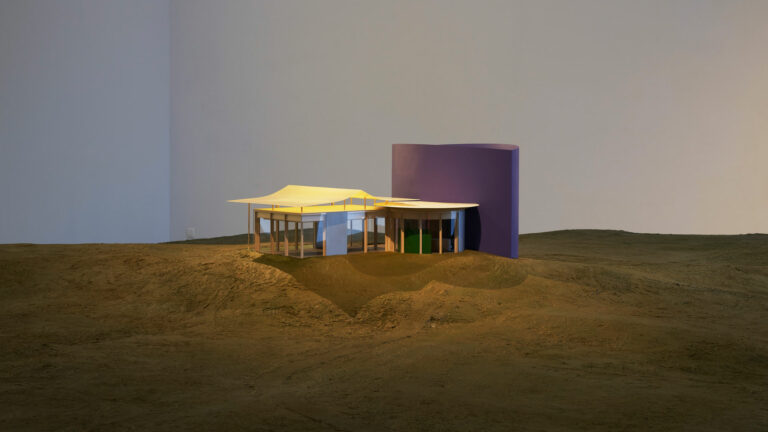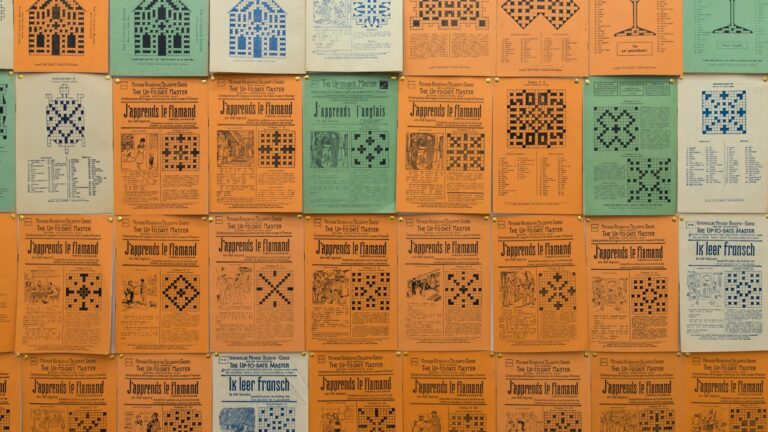Artist: Nicolás Lamas
Exhibition title: Archaeology of Darkness
Venue: Meessen De Clercq, Brussels, Belgium
Date: January 11 – February 16, 2019
Photography: all images copyright and courtesy of the artist and Meessen De Clercq, Brussels
Archaeology of Darkness, the third solo exhibition by Nicolás LAMAS is probably the one which demonstrates the greatest maturity yet. Relentlessly linking elements and objects drawn from disparate fields, Lamas explores concepts drawn from biosphere and from archaeology, or the evolution of techniques for analyzing and grasping the phenomena that govern our way of life. This exhibition shows the total involvement of technical know-how in our existence and the historical evolution of our dependence on manufacturing processes.
The visitor is greeted by Dark Times, a work which stands at the entrance to the gallery consisting of two blocks of black marble squeezing a book with a symbolic title L’Homme et le Temps (Man and Time). Not without a number of references (the black obelisk at the British Museum, the monolith in 2001, a Space Odyssey, kaaba, …) this stele which is at the same time dense and enigmatic, raises one of the recurring questions in all artistic activity in general, and specifically that of Nicolás Lamas.
In the left-hand room, several works address the notion of time via the transmission of information and its control, which at any time, has been of paramount importance in human societies. Controlling information means possessing power. For example, Lamas compares a Sumerian tablet, symbolizing the birth of writing in Mesopotamia about 6000 years ago, with a fragment of computer components illustrating our modern era. This work opens up avenues of reflection about the process of communication over several thousand years, the storage of information, learning methods, the omnipotence of technology as well as the obsolescence of machines. In this respect, La Société du Spectacle (Society of the Spectacle) is an iconic work. Borrowing the title of the book by Guy Debord, the work consists of a video camera filming its own constituent parts which have been completely dismantled down to the tiniest piece before it could be observed that it was malfunctioning. The parts removed in this way are filmed and displayed on a screen in real time. With this modern-day still life, Lamas shows us a world potentially alienated from the image, recording its own disintegration. This heap of wires and cables is echoed in a drawing taking as its source the observation of cave art. The graphical expressions that Paleolithic man produced sometimes took the form of outlines of fingers or tools left in wet clay. These allegories of the creation of the living world are reinterpreted here by Nicolás Lamas to outline the similarities that can constantly be established between yesterday and today.
The genesis of shapes in the work of Lamas is also born out of observation and use of the ordinary or even the trivial. Thus many everyday objects punctuate the evolution of his work and open up interpretations with multiple ramifications. His works sometimes place the viewer in a confrontational posture in as far as the codes of a pre-scripted life are constantly shaken up. Chaos appears to be controlled, and control appears chaotic. Just as two atoms can collide and create a new alloy, the creative process that drives Lamas is guided by chance encounter, assembly and annexation. That can be seen in his work Posthuman flows laid out on a large pedestal in the right-hand room. The work unfolds as a hybrid synthesis between an exhumed human skeleton and mineral concretions, molten metal, tubes and cables, 3D reproductions, electrical wiring and light bulbs, … These are revealed with regard to the traces of complexity of life, the power of tools and the era of the future. Can we not perceive an analogy between the nervous system of a living organism and the worldwide network transmitting incessant flows of data?
The fragility of memories is highlighted in the rear room, where there is an encounter between recent yet already obsolete photocopiers and copies of statues from Antiquity. On the one hand, the reproduction of the written document and, on the other, the wish to disseminate an idea for posterity via an image, a sculpted object. There, we find the philosopher, the athlete, the politician (Brutus the Elder), the archetype of Venus (head of Venus de Milo), the priest (Laocoön), and the architectural element (Atlas). This group emphasizes that our epoch is paradoxical, and sees the accumulation of information, which is no longer legible or consultable within a few years. «After a few centuries, the majority of the information concerning contemporary civilization may have disappeared (…). The immensity of the volume of documents generated by modern activity not only poses a storage problem, but first and foremost the problem of their exploitation, for which technology has failed to keep pace with production». 1 This group shows the innards of these machines, dissected like bodies; they reveal transmission belts that become tendons, wires as thin as blood vessels, and cables as thick as arteries. These disemboweled machines resemble mutilated bodies.
Lamas is showing us that the human being is ultra-connected and dependent on nature, but also of the advance of technology and knowledge of the subject. To consider the future of humanity, it would perhaps be useful to comprehend the emergence of technology as an inevitable stage in natural evolution, with all the potential wayward developments that it entails.
1)André Lebeau, L’engrenage de la technique, nrf, p. 115




















































































